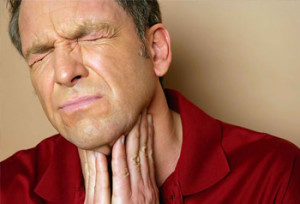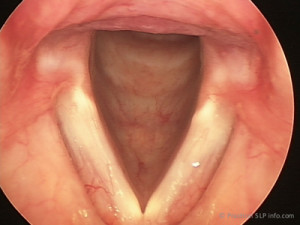Why are you giving me gastric medication for a throat problem?
That is one of the common question I get when treating this disease. Despite adequate explanation and endoscopic (an instrument for examining and viewing the inside of a bodily hollow organ such as colon, bladder, and stomach) examination of the throat, patients somehow have difficulty to grasp the concept of laryngopharyngeal reflux (LPR).
Most people are familiar with gastritis. In both Sabah & Sarawak – local people are more familiar with the term ‘dugal’ rather than gastritis. The complaint of epigastric pain, which worsens during empty stomach is frequently seen in most clinics. In some patients, there is another phenomenon called reflux, or also known as gastroesophageal reflux disease (GERD). In this case, the sourly acidic stomach content goes up into the oesophagus (an organ which consists of a muscular tube through which food passes through the pharynx to the stomach) and causes warm painful sensation at the middle of chest – easily described as heartburn.
The acid goes all the way up from the stomach, into the oesophagus and later into the entrance of food & airway. This damages the lining of throat (pharynx) and entrance of the airway, which is the voice box (larynx), thus the name laryngopharyngeal reflux (LPR). The mucosal lining of the throat is much thinner than the oesophagus; therefore more damages can be seen in the larynx and pharynx due to the acid.
What are the signs & symptoms for laryngopharyngeal reflux (LPR)?
In adults, they may have:
- Persistent throat clearing (98%)
- Persistent cough (97%)
- Foreign body sensation in throat (95%)
- Hoarseness of voice (95%)
How about infants and children? They can have LPR too, but the symptoms are non-specific and vague. It should be borne in mind that your child may have LPR if they suffer from:
- Barking or croupy cough
- Reactive airway disease (asthma)
- Noisy breathing (stridor) and pause in breathing (apnoea)
- Trouble feeding/ food aspiration
- Failure to thrive
How do I confirm that I have laryngopharyngeal reflux (LPR)?
Diagnosis is further supported with laryngoscopy (visualization of the voice box), using either a flexible or rigid endoscopy. On visual view from the laryngoscopy- the larynx will appear swollen, thickened and inflamed at the back region. There may be a benign growth or granuloma on vocal cords in severe cases.
Diagnosis using multichannel impedance manometry and pH monitoring study is not done in most Malaysian tertiary centres. The reasons being that setting up this test is rather expensive and time consuming as this test is done for 24 hours.
How do I treat this disease?
Free treatment includes lifestyle adjustment:
- Weight loss
- Smoking cessation
- Alcohol avoidance
- Restrict chocolate, fats, citrus fruits, carbonated beverages, spicy tomato-based products, red wines, caffeine (in our setting- coconut milk ie. ‘santan’ is known to relax the esophageal sphincter and aggravates reflux)
- Avoid late-night meals
Medication such as proton pump inhibitor (omeprazole, pantoprazole, esomeprazole) and H2 antagonist (ranitidine, famotidine) reduces the symptoms and given up to 3 to 6 months. In refractory cases which do not respond to medication, surgery such as fundoplication is advised.
“Doctor – I don’t have gastric or reflux, why should I take gastric medicine for my throat problem?”
This is a very common query. My most problematic job in the clinic is convincing patients that they have this disease. As only 20% of patients with LPR have heartburn and reflux – they usually have difficulty in accepting the fact that they have to take gastric medication for a throat problem. Some patients will accept, however some will not. Most important is to convince them the trial of lifestyle change and medication.
However, the most rewarding part for me is when the patient returns to the clinic and says “Doctor, you were right!” Not all patients will say that, but that is better than missing the diagnosis of LPR.
Dr. Ahmad Nordin is an ENT surgeon currently working in Sabah. Find out more about him on The Team page.
References:
- Charles N. & Ford M.D. Evaluation and Management of Laryngopharyngeal Reflux, Charles N. Ford, MDJAMA. 2005;294(12):1534-1540. doi:10.1001/jama.294.12.1534.
- Kamrul Hassan Tarafder, Pran Gopal Datta, Abu Shafi Ahmed Amin, M. Alamgir Chowdhury, Ahmed Tariq, Partho Protim Das – Laryngopharyngeal Reflux- A New Paradigm of Airway Disease, Science Journal of Medicine and Clinical Trials, Volume 2012, Article ID sjmct-138, 5 Pages, 2012. doi: 10.7237/sjmct/138
[This article belongs to The Malaysian Medical Gazette. Any republication (online or offline) without written permission from The Malaysian Medical Gazette is prohibited.]



Salam Doc,
Saya mengalami kesukaran bernafas, rasa makanan tercekik di tekak dan dada, dan rasa seperti kahak yang banyak di tekak. Rasa angin yang banyak di dada.Sudah hampir sebulan saya seperti ini. Apa sebenarnya masalah saya?Saya sudah makan ubat gastrik dan ubat kahak tapi masih seperti sama.
Waalaikumussalam Aina,
Mohon maaf kerana lambat menjawab.
Ada kemungkinan anda menghidapi LPR. Anda perlu berjumpa doktor ENT untuk pemeriksaan lanjut. Doktor tersebut juga akan menjalankan pemeriksaan hidung untuk memastikan tiada masalah hidung yang menyebabkan masalah tekak.
Ada sesetengah ubat gastrik kurang berkesan dan perlu ditambah dos atau dinaiktaraf ke jenis ubat gastrik yang lebih berkesan.